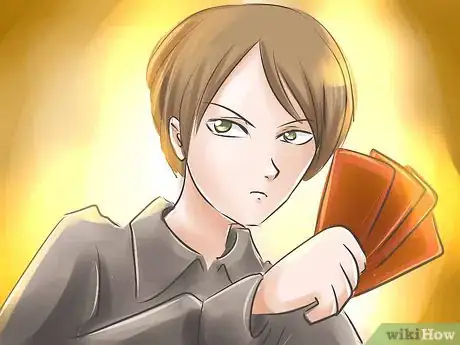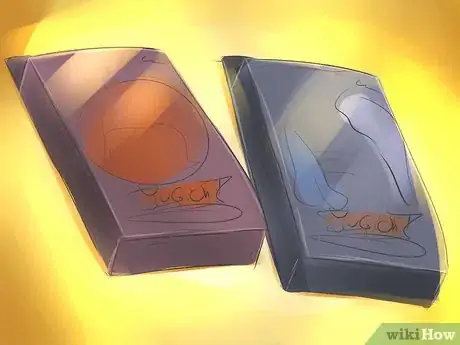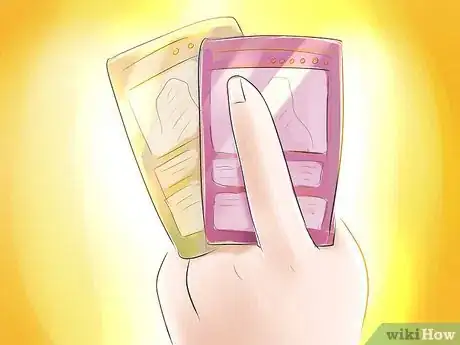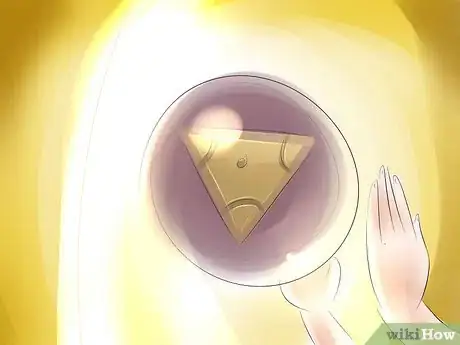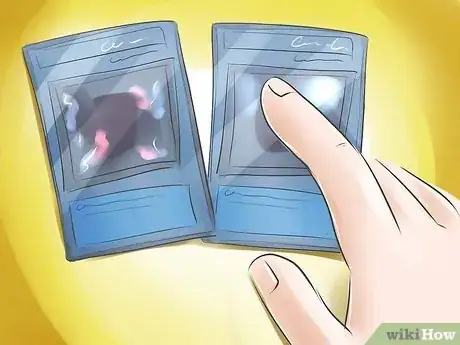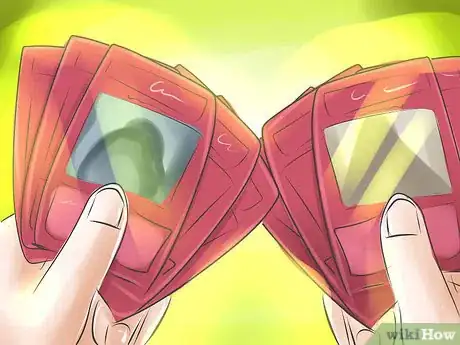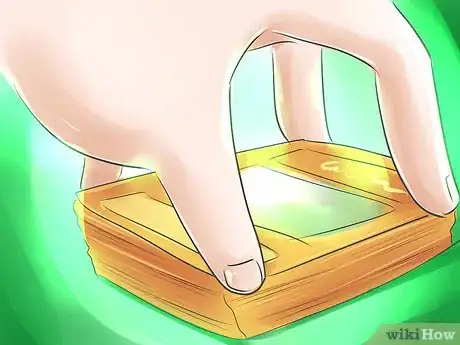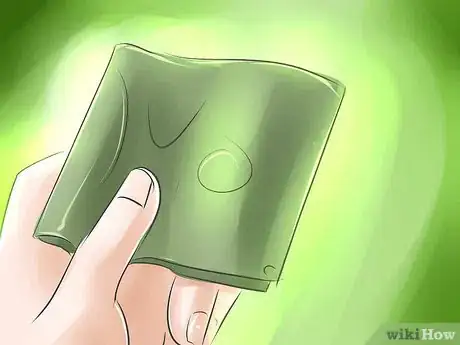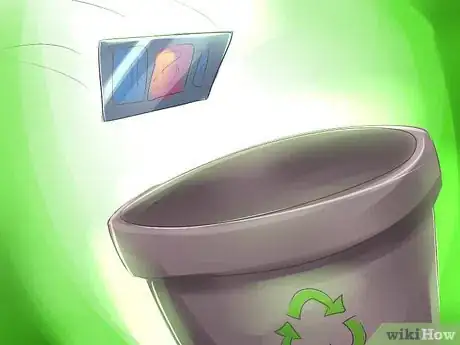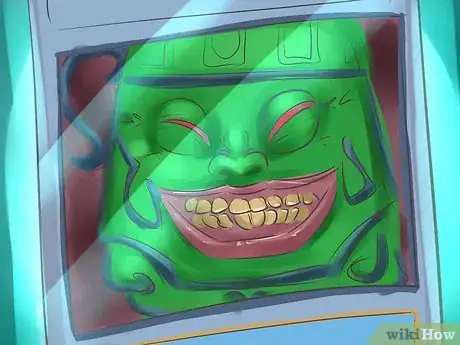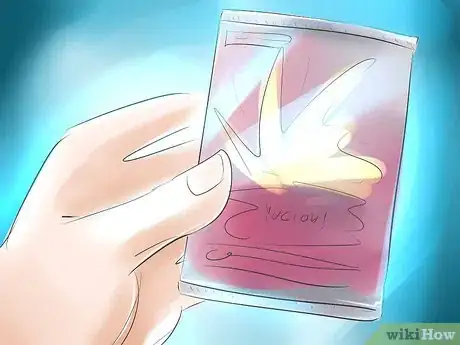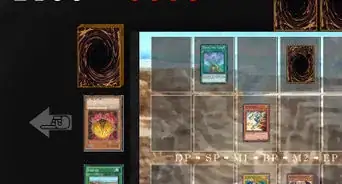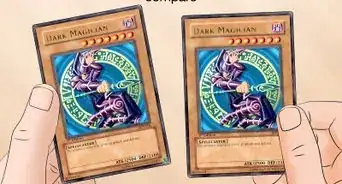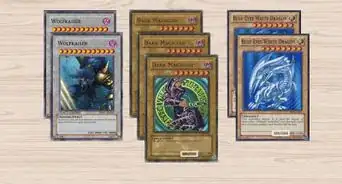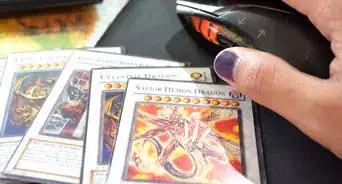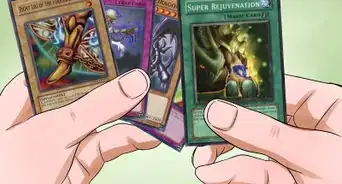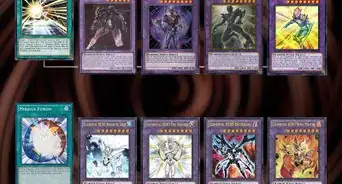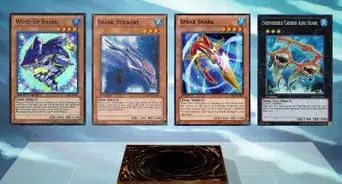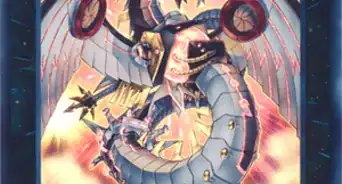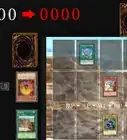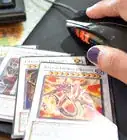X
wikiHow is a “wiki,” similar to Wikipedia, which means that many of our articles are co-written by multiple authors. To create this article, 84 people, some anonymous, worked to edit and improve it over time.
This article has been viewed 1,032,919 times.
Learn more...
This guide should help you Yu Gi Oh! players to form the perfect deck for you someday. This article is written with the assumption that you already have some Yu Gi Oh! cards and have some experience in playing.
Steps
-
1Decide your playing style. This is important, as it determines how people would look at you as a duelist. Are you a rash duelist who would rapidly summon, attack and activate cards? Or are you the deep thinker who would analyze your hand and field before making a move? Or maybe the duelist that would remove cards from play so your opponent cannot use them again? Considering these would help you choose a deck archetype.
-
2Choose your deck type - a themed deck, or one that follows a specific theme of cards. Never have a deck with too many random cards in it. If so, you will not be drawing parts of combos. Also, make sure you have around 40 cards in your deck. The most you should have is 42 even though the maximum is 60 cards.
- The best decks focus around an archetype - a group of cards with similar names and mechanics who support each other. Decks focusing around an attribute or type aren't very good. Neither are most decks with multiple archetypes, though some mesh well.
- There are many different archetypes, and each has many different styles of being used. For example, the main strategy of a Monarch deck is to keep tribute summoning more powerful monsters, and to activate effects while doing so, but that is only one of the archetypes. There are many more to discover.
Advertisement -
3Choose your monsters. Each deck should have around 12-18 monsters, but the number will vary depending on the deck you play. Use low-level effect monsters that support your archetype and have helpful effects in your deck. Most decks do not use normal monsters, since they do nothing on their own, but they have some good support and are included in decks built around them.
-
4Control quantity - You should have:
- LV 1-4: Around 12
- LV 5-6: Around 2
- LV 7s and higher: Never more than 2, depending on the deck. Some decks can and need to be all high-level monsters. These decks are usually able to summon their monsters some other way than tributing. For example, decks like Malefics and Infernoids can special summon all of their high level monsters. For many other decks, especially ones that rely on the extra deck, it is not recommended to include any high level monsters that you can't special summon.
-
5Choose your spells. Most decks will have around 12-15 spells. Around 1/3 of these spells should be for monster support/combos. The rest would be attributed to favorites and staples. Add them into your list once you've decided. Make sure you have good spells for S/T destruction, monster protection, and monster destruction.
-
6Choose your traps. You should have around 4-8 of these. Some decks will require more, and some less. Among these traps, 3-5 should be support for your deck type, and the rest should be staples like Mirror Force, Solemn Warning, and Bottomless Trap Hole. Think about your deck's weaknesses. For example, if your deck has weak monsters, use attack protection like Mirror Force and Dimensional Prison. If you play an aggro deck and are weak to traps, run stuff like Trap Stun.
- If you're running a high monster count, such as in Dragon Rulers or Mermails, 3-6 traps should be enough. Some decks run no traps, and do fine. A good choice for a deck that relies solely on monsters would be Royal Decree.
-
7Fill out your Extra Deck. Most decks can use Xyz monsters. If your deck includes at least 3 easily summoned monsters of a certain level, you can add a couple of Xyz monsters of that Rank. Synchro and Fusion monsters are more specialized - Synchro monsters can be added if you have at least one tuner, and Fusion monsters are only used in specialized decks built around them.
-
8Lay out your cards and make sure that they work together well. It's no use if you have cards that do not work together well. List the cards that you need to improve your deck and make it your business to buy those cards. Watch the cards your common opponents play. Also add some generic cards in your side deck that you can use later on, in between duels. Try looking up your deck type online to get tips or ideas from other people's decks.
-
9Buy cards. Now that you have planned out the deck you want, you can go out and get the cards you will need for it. Structure decks and Starter decks are good ways to start off. They are pre-built, and contain cards that fit together and good support, but could take some improvement. Booster packs have a variety of random cards, which won't necessarily work with your deck, but you could get some really good cards. You can also trade with friends and people at your local card shops, or buy singles online. If you are looking for a specific card, it will always be easier and cheaper to buy it individually rather than go hunting in booster packs for it.
-
10Start playing with your deck. Play against friends and local players to learn the strengths and weaknesses of your deck. After a few games, you will have a better idea of how your deck runs, and may need to take out some cards that don't work for you. No deck is perfect, so you will always be modifying and improving your deck.
-
11Refrain from using cards that are forbidden. An example is Pot of Greed. This card is known to be too strong for normal competitive play, which would make your deck sort of 'cheating'. This card can also cause fights with other duelists.
- Remember to never use forbidden cards in tournaments. You could use them when dueling with a friend but he/she might not accept the offer.
-
12Update your deck! Wait for the newest booster packs to release and if the new cards suit your needs, buy a couple of packs to test your luck. Also, research older cards that will be good in your deck.
Advertisement
Community Q&A
-
QuestionHow do I test the consistency of a deck?
 Supernova92Community AnswerShuffle the deck and draw a 5-card practice hand. See if you can play with that hand. Do this a few times and it should give you a good idea. The best way is to playtest with it.
Supernova92Community AnswerShuffle the deck and draw a 5-card practice hand. See if you can play with that hand. Do this a few times and it should give you a good idea. The best way is to playtest with it. -
QuestionWhat if I want only a dragon style deck?
 Community AnswerIf you want a deck with only dragon cards in it, then you need to find cards that go with dragon cards, such as dragon tactics and stamping destruction.
Community AnswerIf you want a deck with only dragon cards in it, then you need to find cards that go with dragon cards, such as dragon tactics and stamping destruction. -
QuestionWhat will happen if my deck is weak and there is only one strong card?
 Community AnswerYou will probably lose to a lot of people who have stronger monsters. It will put you more on the defensive rather than the offensive. Try to find some good trap cards that can destroy your opponents' monsters.
Community AnswerYou will probably lose to a lot of people who have stronger monsters. It will put you more on the defensive rather than the offensive. Try to find some good trap cards that can destroy your opponents' monsters.
Advertisement
Warnings
- Be careful of purchasing cards, especially online. You may end up with fake cards, which won't do much good in duels or tournaments. When buying cards try to find out if the seller is reputable or inspect the cards/packaging.⧼thumbs_response⧽
- Never resort to cheating. Don't steal cards, stealing is never the way to go. If you steal, people will eventually find out that their cards were stolen. Also people will never take you as a good duelist if you steal so don't do it.⧼thumbs_response⧽
Advertisement
Things You'll Need
- Cash
- Cards
- Friends
- Knowledge
About This Article
Advertisement
